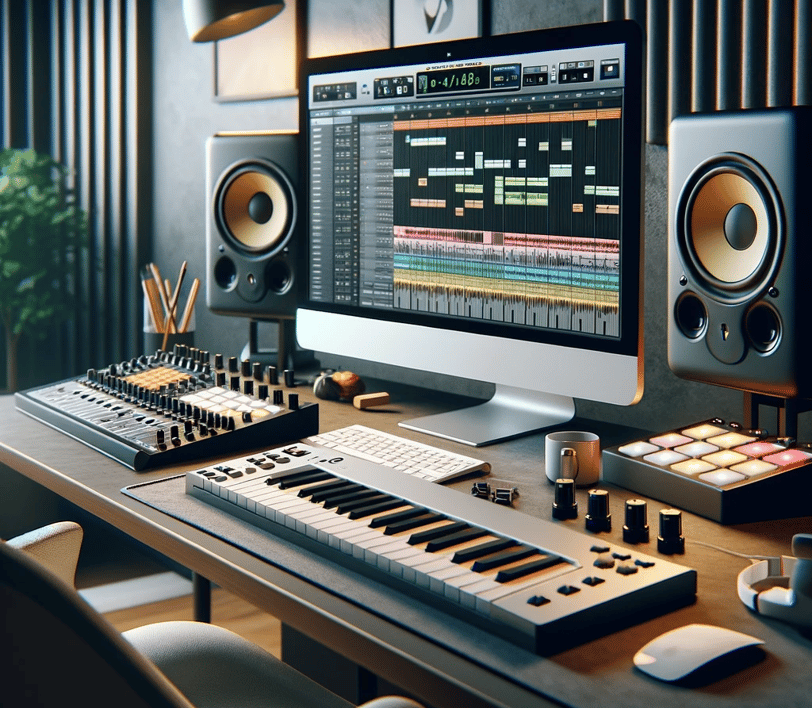Getting Started with MIDI and Automation in Music Production
For beginners, understanding these concepts is crucial for enhancing control and creativity in their music production workflow.
2/8/20242 min read


MIDI and Automation in Action
Creative Applications
Dynamic Composition: Experiment with different melodies and rhythms using MIDI before finalizing your arrangement.
Sound Design with MIDI: Control synth parameters through MIDI for evolving soundscapes.
Efficiency with Automation
Automating Mix Elements: Use automation to create dynamic mixes, like gradually introducing instruments.
Creative Effects: Automate effects like delays or filters for dramatic changes in your track.
Starting Your MIDI and Automation Journey
To begin, you'll need:
A DAW (Digital Audio Workstation): Software like Ableton Live, FL Studio, or Logic Pro.
A MIDI Controller: Consider your instrument preferences and workspace size.
Time and Patience: Experimentation is key in understanding and mastering MIDI and automation.
Conclusion: Unleashing Creativity with MIDI and Automation
MIDI and automation are not just tools; they are gateways to a world of musical possibilities. They provide the freedom to experiment, create, and refine music in ways that were once impossible.
Join Our Community for More Music Insights
Dive deeper into the world of music production with our newsletter. Get the latest tips, tutorials, and industry insights delivered straight to your inbox.
Subscribe to Our Newsletter for exclusive content that will guide you through mastering MIDI, automation, and beyond in your music production journey.
Music production has been revolutionized by the introduction of MIDI (Musical Instrument Digital Interface) and automation. For beginners, understanding these concepts is crucial for enhancing control and creativity in their music production workflow. This blog post offers a detailed exploration of MIDI and automation, empowering beginners to utilize these tools effectively.
Deep Dive into MIDI
Understanding MIDI
MIDI is not about transmitting audio. Instead, it communicates information about how music is played. This digital language involves:
MIDI Messages: These include note-on/off (which note is played and when it stops), control change (tweaking synthesizer parameters), and program changes (switching between sounds or patches).
Velocity and Aftertouch: MIDI can also transmit velocity (how hard a key is pressed) and aftertouch (pressure applied to a key after it's initially pressed), adding expressiveness to performances.
Choosing and Setting Up a MIDI Controller
Types of Controllers: From keyboard controllers, drum pads, to wind controllers, each serves different purposes. Keyboard controllers like the Akai MPK Mini or Novation Launchkey are popular for their versatility.
Software Integration: Controllers need to be mapped to functions within your DAW. This might involve assigning knobs to control virtual synth parameters or pads to trigger drum samples.
Automation in Music Production
The Scope of Automation
Types of Automation: Beyond volume and panning, automation can control plugin parameters, such as the depth of a chorus effect or the decay time on a reverb.
Layering Automation: Automation can be layered, meaning you can have multiple automation lines on a single track, each controlling different aspects.
Techniques and Best Practices
Drawing vs. Recording Automation: While drawing allows for precision, recording automation in real-time with a MIDI controller can capture the nuances of a performance.
Automation Curves: Understanding different types of curves, like linear, logarithmic, or exponential, can help in creating more nuanced automation.
